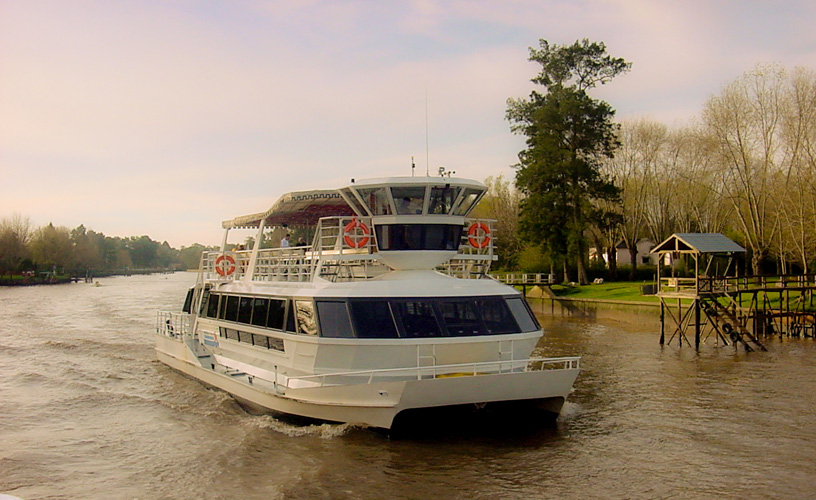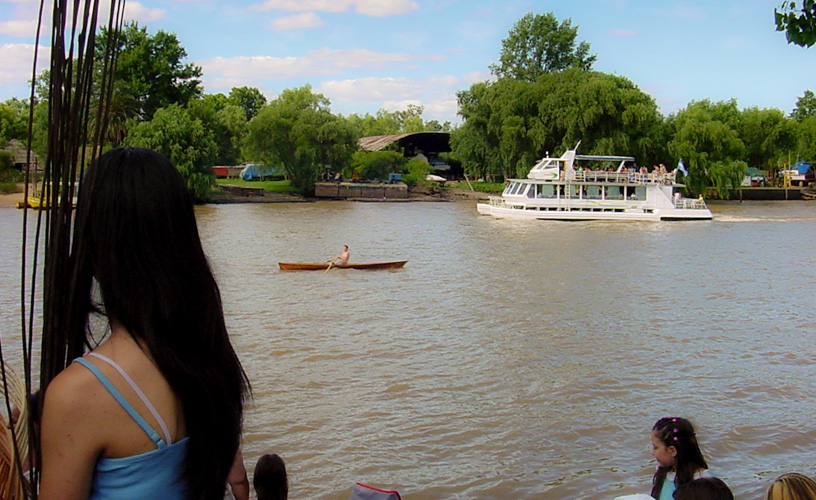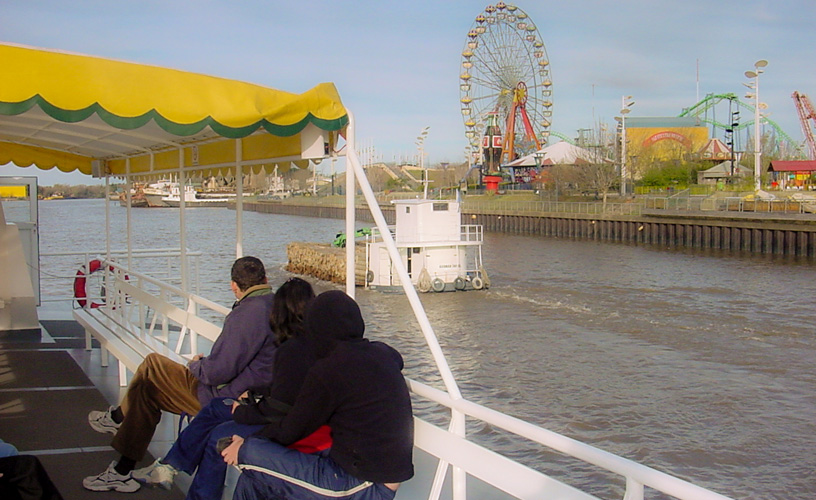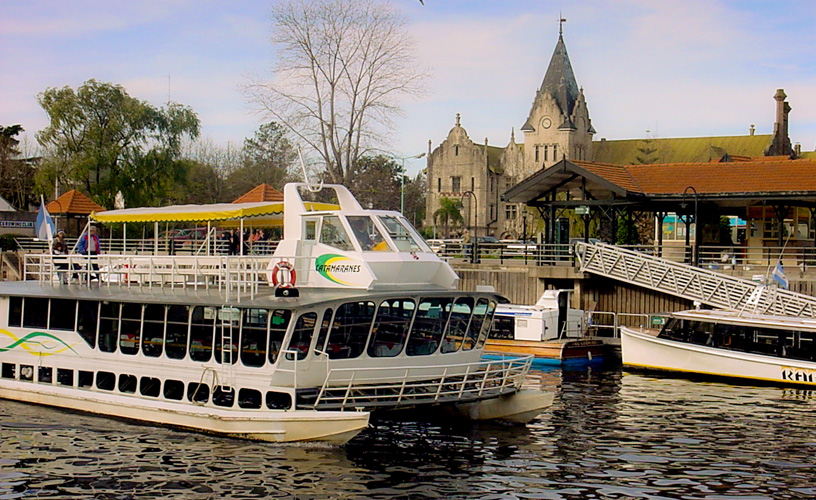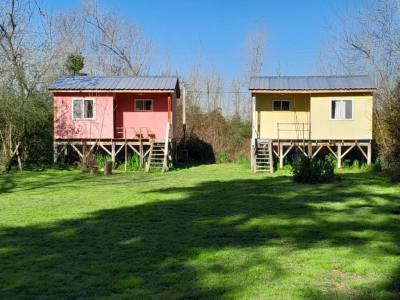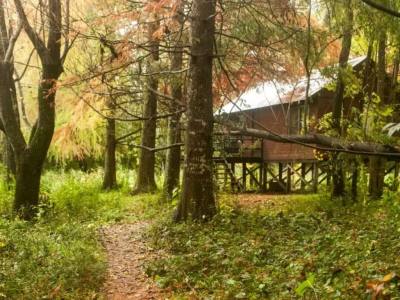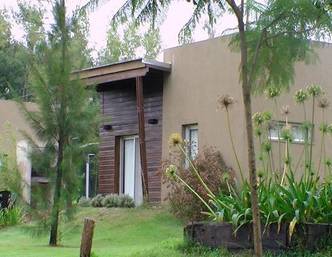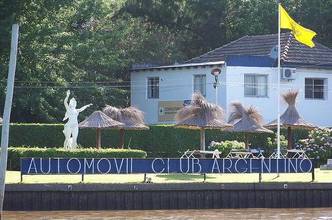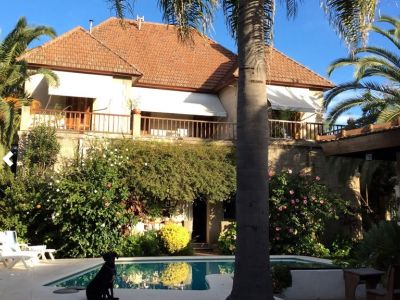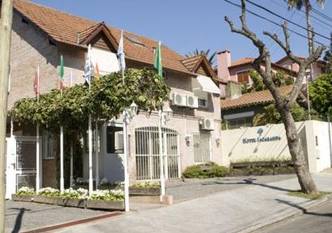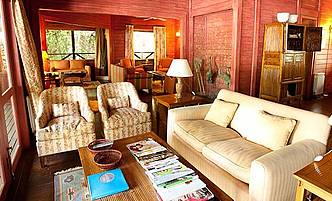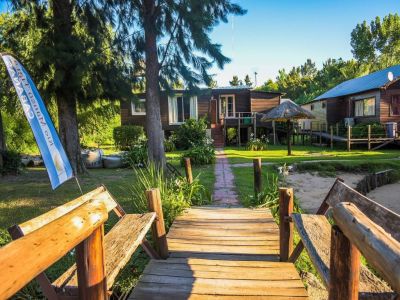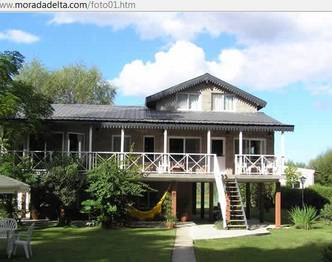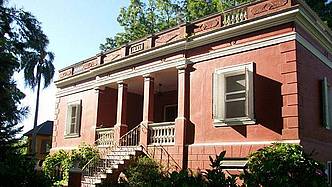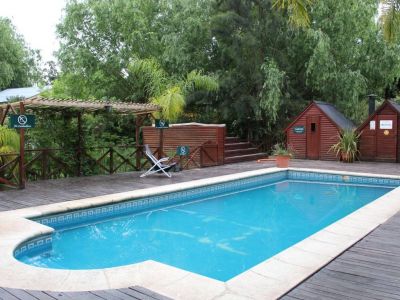This is one of the safest ways of traveling the Delta. For over 35 years, Catamaranes Interisleña has offered these rides. Ideal for those who, in addition to sailing the river, like to enjoy a nice cup of tea, or coffee or be delighted by a piece of cake. A must for tourists.
The Fluvial Station
Reaching the Fluvial Station is part of the ride. At 499 Lavalle Street, one of the most beautiful in Tigre, stands a beautiful and old corner building which lodges the offices of Catamaranes Interisleña.
Cecilia Tato was expecting there in order to show us one of the typical tours done everyday on board one of the seven catamarans that make up the fleet.
According to Cecilia, our delta is the third in the world as regards size, following the famous Nile River Delta (in Africa) and the Amazonas River Delta (in the North of Latin America). Nevertheless, its 27 thousand square kilometers have been hardly exploited.
Its most outstanding flora is located in the third section of Tigre and is made up by poplars, ceibos, rush, wicker, cane and willows, from which wood is extracted. The fruit are also the stars in the scene. There are citrus fruits such as oranges, tangerines and grapefruits, but it is also possible to watch the islanders transporting boxes with pears and apples from the islands, which are traded at the Fruit Harbor. The INTA (National Institute of Agricultural Technology) once experimented with cotton plantations on the delta islands.
In the spring, the azaleas, honeysuckles, hydrangeas, wisterias and orchids delight the sight and the sense of smell of tourists approaching the river.
In this site located a few kilometers from the immense city of Buenos Aires, the fauna is most varied. Even if the jaguar -which has given the name of “Tigre” (tiger) to this place- has become extinct, today it is possible to find on the islands a great amount of otters, capybara, birds and fish, such as the pejerrey in the winter, and the dorado and the surubí in the summer.
The Vastness of the Delta
The river waters were still: this phenomenon is called “calma chicha”. This is the opposite of the sudestada (a strong wind blowing from the East). And in the delta, sudestada is not only a word. It is a lifestyle. Its codes and experiences lived by ordinary men that have something in common: the flood. And when this happens, they have to move back. But how can this be explained to a tourist?
As we were sailing, the guide would transmit her knowledge to all visitors. We were leaving the Tigre River and its famous hotel behind to get deep into the core of the Luján River. We could observe the Parque de la Costa (an amusement park), the Casino Provincial de Tigre and the colorful fruit harbor, a market where the islanders offer the products from the islands.
We left the Luján River and entered the Sarmiento River, so-called in honor to the Argentinian national figure, who was one of the most important educators in our country.
In addition to the sceneries, there were several experiences. Crafts of various sizes and shapes passed us by during the tour. From the most gorgeous yatchs and sailing boats, to the various services that are regularly provided at the delta: public boats launches carrying people, the groceries boat -which provides goods to the islanders-, the wood launches -which collect local products- and many others, as well as the small canoes and fishing boats that sail across the entire creeks, rivers and channels. The colorful piers in each of the houses also caught everyone's attention.
The beautiful varnished rowboats were the most praised. These small crafts, along with the variety of clubs representing rowing, are part of the richest background Tigre has. No wonder, the Monument to the Rower is one of the tributes to have been raised in honor to these sportsmen.
Following down the Sarmiento River, and with almost forty minutes of navigation, we started to see a singular crystal building lodging an old wooden house inside.
As we approached it, most tourists, both local and foreign, began to make all kind of assumptions about what it might be, until the guide explained that it was the Sarmiento Museum, where a library also operates.
As a result of the decision made by the Municipality of Tigre, the house has been protected by a transparent glass that prevents the building from receiving the effects of time and the weather. It can be visited everyday, but it is only reachable by boat.
Going Back Home
The photos and film shots followed one another as the captain of the boat began to change the catamaran course. The sun was setting and it was time to go back to port.
At the luxurious boat coffee shop, tourists of all ages were tasting both hot and cold drinks accompanied by delicious pieces of cake or tasty sandwiches. It was time for relax.
In this case, we chose the one-hour ride, but there are also two-hour rides which, after reaching the Sarmiento Museum, continue their tour along the San Antonio River and the Vinculación Channel and then go back to port, just like we did, along the Luján River.
Dusk caught us on our way back. The sun setting into the islands was a show not to be missed. The almost two hundred tourists on board could not believe that such a garden of eden could be so close to Buenos Aires.
From now on, the delta, its islands and its people will remain in the memory of visitors as one of the most beautiful spots in Argentina.
Some minutes before we arrived, the river had changed completely. It was a different river.
“What happened to the river? Its waters used to be still and now I can hardly recognize them” asked one of the tourists. “Sudestada” explained the guide. And she added… “It happens when the river blows and the wind writes on its waters….”.
Even if the change was noticeable, the catamaran could hardly feel it. We had reached the pier.
Pablo Etchevers
Pablo Etchevers
Phone: +54 11-47310261
